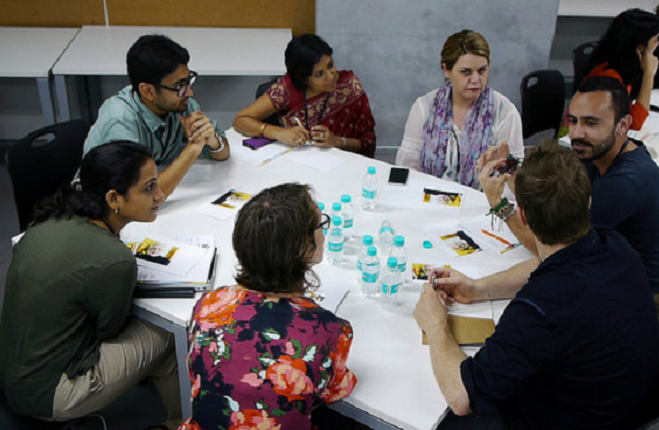Greater funder connectivity for social change

Photo credit: Social Innovation Exchange
The SIX Funders’ Node took place at the Rockefeller Foundation in New York in January and was the first convention of social innovation grantmakers from three continents. Andrew Barnett, Director of the Calouste Gulbenkian Foundation’s UK Branch, writes about his experience.
Social Innovation should be invigorating and I returned from the SIX Funders’ Node gathering with the lyrics of the Frank Sinatra song New York, New York ringing in my ears. Despite the snow blizzard, we did make it there. Some 20 funders of social innovation met to share our tools and practices and to think about how we might address some of the common challenges we face regardless of the specific areas of work that we focus on. All of us are interested both in funding social innovation and in doing so innovatively.
Playing to our strengths
Many trusts and foundations have permanent endowments, independent of political or commercial interests, and can therefore take the long view. They can invest in ideas ahead of their time. They can help address the causes of social problems rather than just the symptoms. They can explore preventative measures and go “up stream”. Take, for example, our transitions in later life work, which supports people ahead of retirement so that they are better prepared for the changes they may face in later life. We apply the same approach to our work on ocean protection: though the harmful effects of ocean degradation are already evident, our concern is to avert the risks forecast for twenty or more years hence. This suggests that if trusts and foundations are to play to their unique strengths and to address unmet or future needs, rather than current ones, we need to hone our foresight skills by looking at trends and sharing transferable learning across different silos. It was refreshing to hear how each of the funders present was attempting to do this systematically.
In smaller groups, we explored four key themes: our role in working with communities; impact, sustainability and risk; encouraging collaboration; and governance structures and system change. We talked through possible responses to the questions we each brought to the table. There were no right or wrong answers, only peer-to-peer advice and the offer to share some of the tools that each of us use.
This was a diverse group of funders. We come from different parts of the world (mostly from Europe and North America); we operate in different organisational structures; we have different specific areas of interest. But there are common characteristics among us: our interest in complexity and in helping the most vulnerable or underserved groups and our shared emphasis on evidence, local citizenship, and, more importantly, collaboration.
Key takeaways
Greater connectivity is critical. One of the things I have observed in our own work – from marine conservation to the arts – is that small organisations are doing lots of interesting things but massive fragmentation persists. Learning does not always cross the boundaries between organisations, sectors and topics.
We need to connect much more and draw out the learning from what is working and what is not working. For all of those like us who are trying to push the boundaries of practice, it may feel a bit scary. Yet imagine a world in which we could draw more systematically on the experience of others: we could be much more intentional, act more swiftly and decisively, and shed some of that anxiety that comes with working at the edge.
For me, that is what the Social Innovation Exchange (SIX) is about. We are a community of people that share a commitment to changing things for the better: experimenting, connecting people, and acknowledging that we don’t have all the solutions. Often, there are things going on in other countries that we can draw from and certainly that’s been the case for us within our arts programme in which work in Brazil has been an enormous inspiration.
I think that this network of funders has the potential to really drill down into the important issues of the day and open ourselves up to some of the really important questions that vex us about our practice. Our future successes are likely to stem from building and participating in a high quality system of peer learning and greater connectivity.
